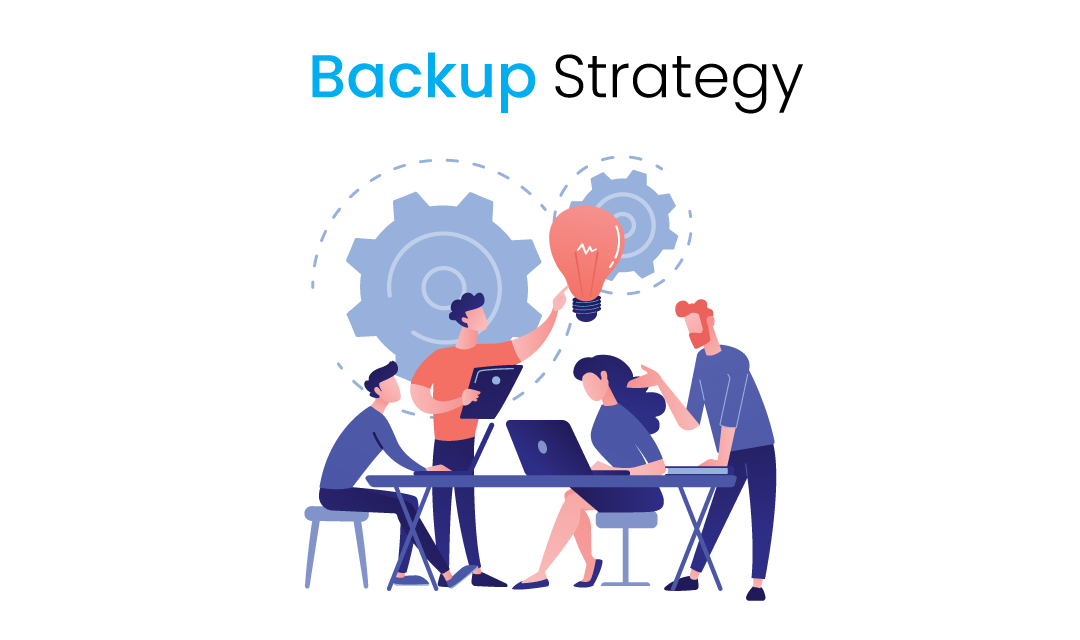
No one is thrilled with making backups but some of us who lost data in the past know how critical it is to backup our data regularly. I used to make a backup of my PC on an external HDD, and replicate the contents back to forth when I get a new PC or new HDD. As size of the HDD gets larger, I've upgraded my HDD a few times and finally moved to a NAS drive with RAID 1 mirroring. Having an external hard drive was great until cloud drives debuted in 2008.
What is a backup?
We often confuse backups from cloning. The goal of copying your PC files to an external HDD or cloud is for backup purpose, but copying require manual intervention while backup doesn't have to be. Also, copying an entire repository of files to a hard drive (or cloud) overwriting existing files is not very efficient as only a small fraction of files may have changed. This is where backup comes into play. A backup is a software-assisted copy of your files from one location to another, and it can be a "full", "incemental" or "differential". Let's review what they are:
- A full backup is as the name suggest, you're making a complete backup of entire files.
- An incremental backup is making a backup of files that are changed since the last backup whether it is a full or incremental backup. For example, let's assume that you made a full backup of your system on Sunday. On Monday, you created a new file (a) and changed an existing file (b), and your incremental backup on Monday will only include those two files (a and b). On Tuesday, you've created a new file (c) and the incremental backup on Tuesday will only include that new file (c). Something bad happens on Wednesday, and you realize you need to restore the entire partition, you'll restore the full backup from Sunday, incremental backup from Monday, and incremental backup from Tuesday to bring the partition back to the state where you were on Tuesday.
- A differential backup is similar to incremental backup where it only backup changed files but not from the previous backup, but going back to full backup. For example, let's assume the same scenario as before where you make a full backup of your system on Sunday. On Monday, you created a new file (a) and changed an existing file (b), and made a differential backup. On Tuesday, you've created a new file (c) and made another differential backup. Something bad happens on Wednesday, and you realize you need to restore the entire partition, you'll restore the full backup from Sunday, and only need to restore the differential backup from Tuesday skipping Monday backup.
There is a trade-off between incremental and differential backups, where the differential backup is easier to restore while the incremental backup is copying less. A typical full backup is done once a week, and either incremental or differential backups were made throughout the week. I would personally prefer differential, but if your changing volume is high you may prefer incremental.
When you purchase an HDD or NAS, it may come with backup software that you may be able to utilize. If you use a Mac, you can use Time Machine, backup software that comes with macOS. Windows has a similar backup and restore tool that you can utilize.
Considering that a typical lifespan of an HDD is 3 to 5 years, you may have to replace your HDDs every 3 years. Aside from replacing HDDs every few years in preparation for failure, keeping your system and backups in the same location has some risks. For example, if your house is burnt down or had an earthquake, you may be losing both your system and backups causing you to lose your important data.
An alternate solution to HDD backups is using an off-site cloud backups. There are companies like Carbonite, Backblaze or iDrive that you can use to backup your systems. The pricing range anywhere from $50 ~ $70 per year, but they will store your backup in a cloud safely.
Is Cloud Drive a good backup alternative?
Many people use cloud drives such as the Dropbox, Google Drive, One Drive or any other cloud services as an alternative storage for your backup solution. You will map the cloud drive on your PC or Mac, and create files as normal and all the files stored on your mapped drive will be sync'ed with the cloud. This is perfect as the process is automatic, and you have an off-site copy of your files. However, there is a serious drawback to this solution. For some reason, if you corrupt your original file on your PC or Mac, the corruption will be trickled through and overwrite your cloud copy. Aside from this drawback, a cloud drive can be an excellent solution to your backup strategy.
Conclusion
There are several ways you can achieve your backup. The most rudimentary strategy is to use a local HDD to backup your files, followed by a cloud drive like Dropbox, One Drive, and Google Drive. For a more reliable backup strategy for small businesses, we recommend using third-party cloud backup companies like Carbonite, Backblaze, and iDrive. Regardless of which backup strategy you use, having one is a lot better than not having one.
Share this post
Leave a comment
All comments are moderated. Spammy and bot submitted comments are deleted. Please submit the comments that are helpful to others, and we'll approve your comments. A comment that includes outbound link will only be approved if the content is relevant to the topic, and has some value to our readers.

Comments (0)
No comment